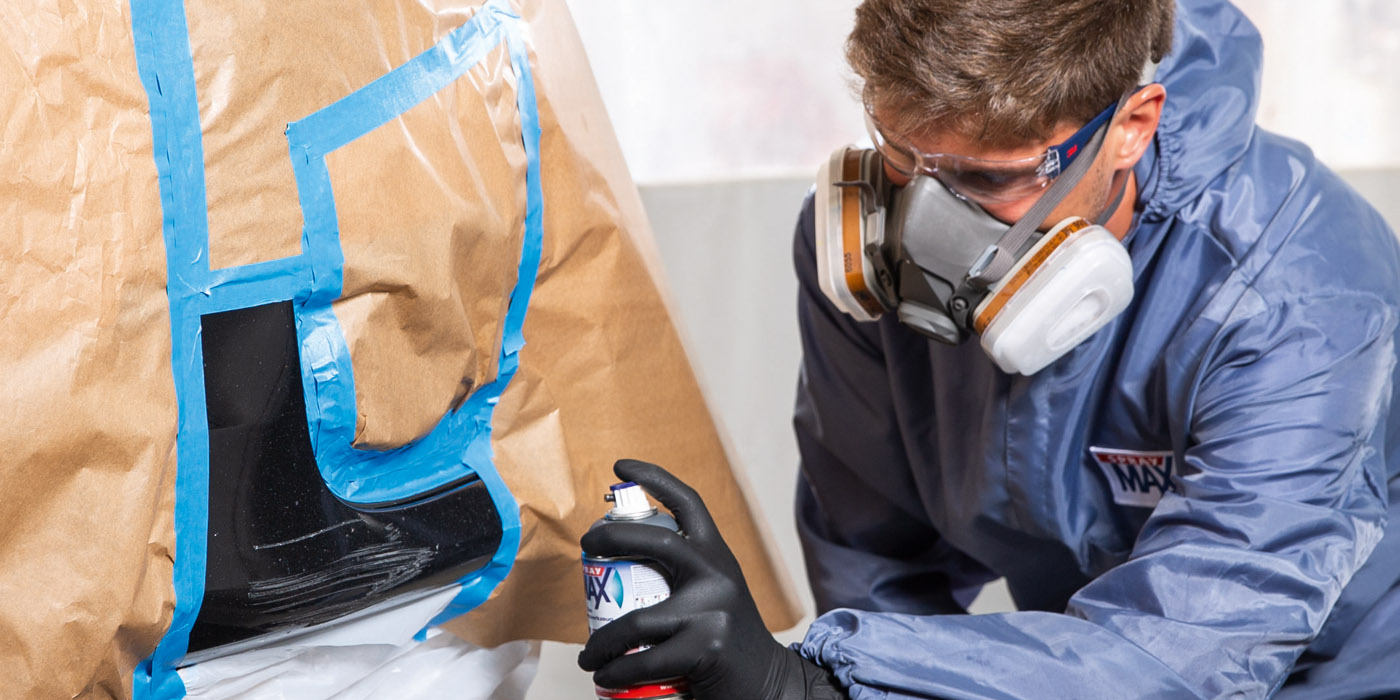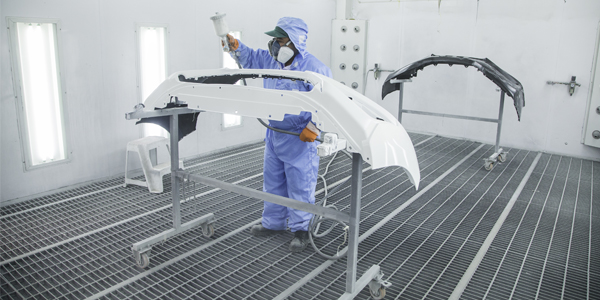Spraybooths aren’t cheap. In fact, some shop owners paid more for their spraybooth than they did for their house.
Even if you didn’t shell out that kind of cash, it pays to know how to get the most out of your booth.
But what if you don’t know how? What if you have a spraybooth question that you can’t seem to find an answer to?
Then you’ve come to the right place. Lots of BodyShop Business readers have written in with spraybooth questions – and I’m going to do my best to answer many of them. If you have a question that isn’t addressed here, please fax your question, along with your name, title, shop name, city and state to (330) 670-0874 or e-mail it to BSB Editor Georgina K. Carson at [email protected]. Your question – along with a detailed answer – could appear in an upcoming issue.
Air Speed and Paint Work
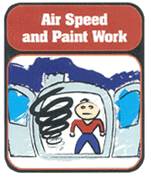
“I’d like to know what affect different airflow rates have on paint work. We have the ability to vary the CFM in our booth, and I can create somewhat the same FPM over a single part on a stand as I can over a complete vehicle in the booth. I’d like to know what the optimum airflow should be (not necessarily what OSHA wants), and what more or less will do to paint quality.” – Brad Hodel, owner, Brad’s Autobody, Roanoke, Ill.
Three things affect how quickly paint dries: temperature, humidity and air movement. To see the dramatic effect of airflow on solvent evaporation rates, watch your significant other when she blows on her fingernail polish to dry it. More air rushing by means faster dry times. The airflow is too fast when even the slowest solvents won’t keep the film wet and smooth. The airflow is too slow when it can’t, at the very least, quickly clear the air inside the booth.
The federal government has set standards for worker safety in the booth, not paint flow or dry times. They’re concerned and want to be sure that the fume-laden air moves past the painter quickly enough to keep him in good health. To be compliant with these regulations, your booth should move about 100 FPM (feet per minute) of air past the operator.
This is plenty of moving air for today’s auto finishes. At somewhere around 40-50 FPM, the solvents used in refinish are pulled from the paint film and swept away fast enough to keep the room relatively clean and to prevent dieback. (Dieback is when solvent is trapped inside because the top of the paint film dried first; the trapped solvent squirms out later, causing the finish to dull down.) If you increase air speed, the upper limit is probably around 150-170 FPM. At much past 150 FPM, it feels like you’re standing in a mighty stiff breeze.
Also, too much moving air sucks the solvent from the paint film before it flows out smoothly and evenly. On the other hand, too little air movement and the finish dries slowly, collects dirt and obstructs paint production.
My advice: Move as much air (faster dry times) as you can handle painting under. The trick is getting the right solvent evaporation speed. Start with the very slowest evaporating reducer and work backward, not the other way around. The perfect mix may be a blend of two solvent speeds. Most paint manufacturers have no objection to mixing adjacent solvent blends together. Ask your rep to be sure about your brand.
Back to Brad’s original question. I’d move lots of air over the parts to be jambed by turning up the airflow to match the air speed you get when a car is being painted. The sheer volume and size of an automobile in the booth makes a big difference in how fast the air moves. The bigger the car, the faster the air moves around it. It’s too much air when the parts dry too quickly.
Dirty Little Secret
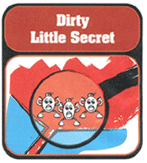
“Suddenly, I’m getting an excessive amount of fine trash in all the vehicles sprayed in my downdraft booth. After examining these particles under a 30x magnifier, we determined that it’s consistently the same type of particle in all vehicles. I’ve had air-quality tests performed on our air-supply lines and airflow, and the booth is in excellent condition. There are no contaminants coming through the air lines. My painter wears a spray suit and gloves. All possibilities have been eliminated except the air coming into the booth. My ceiling filters were changed two months ago as part of our sublet annual service plan. My trash problem started shortly thereafter. Is it possible for my ceiling filters to be breaking down and releasing particles into the wet paint?” – Randy Bishop, AutoColor, jobber tech
Sounds to me like that’s exactly what’s happening to your paint work. Filters make all the difference in the world in how well any booth performs, and intake filters in any style spraybooth are designed to trap incoming dust and dirt. But body shops are notoriously dirty environments. A great idea is to collect the air for the booth from outside the building. Regardless of whether the air comes from inside or outside the shop, the primary, ceiling or door filters are designed to clean the incoming air – how well they clean it depends on the weave and design of the filters.
The air filter on your car is an easy way to understand weave and design. If you build a filter that has too many layers or is woven too tightly, no air can get through and the car won’t run. Make the weave just slightly looser and the filter does a fantastic job cleaning all the fine dust from the incoming air, but it plugs up with the same dust in just a few hundred miles. On the other hand, the automobile air filter is useless if the weave is so loose that hunks of dirt and small stones fit though the mesh. The goal is to balance the air filter’s ability to sift out dirt with its ability to pass a sufficient volume of air and last a reasonable amount of time.
Spraybooth filters work on the same principal. Intake filters in the booth door and in the pre-cleaner for the air makeup furnace need to be finely woven to stop dirt but loose enough to pass 100-plus FPM of moving air. More expensive filters do a better job. (Surprise!) Better filters are engineered very cleverly by using different materials for the filter media, weaving it differently and layering several different weaves on top of each other. Cheap filters are, well, cheap.
Ceiling filters in a downdraft prep deck or spraybooth must do one more thing, too. They need to filter out particles and pass volumes of air. A true downdraft ceiling filter also must balance the airflow across the face of the filtered area. (A darn good trick if you ask me. Just by using cloth, paper, clever design and ingenuity, these filters even out airflow from front to back and side to side. For example, downdraft ceiling filters fit onto the bottom side of a metal air box called a plenum. The other five sides of the box are solid metal except the top side, which has the discharge duct from the furnace welded onto it. Air-balancing filters strive to prevent any air from escaping the box until the pressure is uniform across the whole filtered area.)
Many repairers and vendors don’t understand the importance of correctly constructed downdraft ceiling filters. And by buying the cheapest filter media possible, they’re giving up the balanced air flow they need to produce clean paint work quickly. Granted, good downdraft ceiling filters can cost as much as $1,000 per set. But shops that spend less on cheap filters pay the price in poor booth performance and dirty paint work.
To answer Randy’s question, I predict the subcontracted booth-maintenance company is installing cheaper filters. One of the signs of any poorly constructed filter is that it disintegrates and blows apart as air volume and speed increase. In a typical automotive downdraft, the booth will move about 10,000 CFM of volume at about 100 FPM of speed. That’s a bunch of both! It’s likely that the cheap filters are blowing apart and shedding into the paint work.
Repair or Replace?
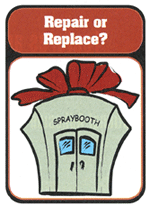
“We have two booths at one of our stores. One is 6 years old and the other is 11 years old. How does one evaluate whether to replace, update the mechanicals or just continue to use the booths? What are the factors involved? Energy efficiency, clean paint jobs, cycle time or whatever else?” – Dick DeLaere, Westside Auto Body CARSTAR, Kalamazoo, Mich.
Spraybooths came into existence mostly as a fire-prevention method. While paint work is cleaner when contained inside a box, the real purpose is to contain a fire inside the box. As a result, to be legal, the box must be constructed out of fireproof materials. Presuming the metal walls of Dick’s two older spraybooths are in good condition, updating the mechanicals makes sense. If the walls of the existing booths are rusted or badly bent, a complete new booth might be warranted.
It’s impossible to beat the advantages of downward-flowing air in an auto paint booth. Dragging the air lengthwise across the car is much better than nothing but not nearly as desirable as top-to-bottom airflow. If Dick’s two booths are downdrafts and the walls aren’t rusted, I’d repair or replace the mechanicals. If his booths are crossdrafts, I’d spend the money for at least one new downdraft.
A thorough update of downdraft mechanicals would include the exhaust fan, the air-replacement furnace, both motors, dampers and all ducting. Most exhaust fan blades don’t break or bend; they just need to be cleaned of paint buildup. The exhaust fan’s electric motor may only need new bearings, or it may need a complete rewind and rebuild. Many times, a rebuilt electric motor is available on an exchange basis. The burners and heat exchanger in the air-replacement furnace can be replaced separately, but since there isn’t much else involved, a complete new air makeup unit may be a better buy. Dampers also need to be cleaned and lubricated regularly to work correctly. In any case, the old sheet metal box needs to be trued up, squared and carefully caulked shut.
Replacing the older downdrafts with brand new units may be warranted if the new unit can move enough more air, cook enough more jobs or produce much cleaner work than the refurbished old unit. Since the shop will only be buying one new air makeup furnace and one new electric motor, the complete new booth package may be a good buy because booth manufacturers often buy hundreds of furnaces and motors and sometimes offer a better price. Price the refurb first and then shop for new. If they both move the same amount of air, reach the same cook temperature and have the same lights, choose the less expensive option.
Build Your Own
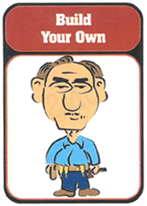
“How would someone wanting to design and build his own booth go about getting started? Where would you obtain a set of plans? How much airflow do you need? What type of filtering is needed? What would be the optimum size? Should a downdraft style be used in a home-built booth? I know that a home-built booth won’t render the results of a $50,000 booth, but I’m convinced that I can achieve the same results, if not better, than a $10,000 or less booth that’s on the market. I’ve seen these booths, and I’m not impressed. I don’t do the volume to justify a high-dollar booth, but I do want good results!” – Jason Jacques, owner, Classy Car Paint and Body, N.C.
Without a doubt, the absolute first stop in building your own booth is the local fire and building code people. As every bona fide spraybooth manufacturer will tell you, the local code folks have final say. No matter what the catalog says or what they did in the last town, local rules rule! Start with a visit to their office. (In the event that your current situation is less than perfect, no point in inviting trouble to your door.) Typically, you’ll need fireproof construction, UL electrical components, code-approved wiring and mechanical installation.
In general, an automotive booth is 24 feet long by 14 feet wide by 9 feet high. It has 8 to 12 lights, 10,000 CFM exhausts and two doors at opposite ends of the booth.
Airflow can be crossdraft – either front-to-rear or rear-to-front; downdraft – top-to-bottom; or semi-downdraft – in high in the front, out low in the rear. Any style of booth will work better if you positively replace the air you exhaust. If the exhaust fan sucks out 10,000 cubic feet of air every minute, you better have a method to replace the air or all the doors in the shop will slam shut as the negative pressure builds up.
Adding a heating unit to the air-replacement system means you can paint at a consistent temperature and speed cure time by raising the temperature for a force cure cycle. Such a furnace is typically a $10,000 to $15,000 investment. More air volume and higher bake temperatures cost more money.
The $10,000 booth Jason has seen is just a fireproof metal box with an exhaust fan and filtered doors. He may well be able to build something similar for less, as long he speaks with the local enforcement folks first!
Wash and Wear
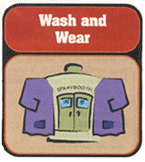
“I’d like more information on booth wall and floor coatings.” – Delane Langton, Blue Body & Paint, Billings, Mont.
The goal of booth coatings is to keep down dirt and provide a reflective spray environment. Floor coating must also withstand the tire/shoe traffic. Some floor coatings are no more than alkyd enamel paint, and others are multi-part urethane or epoxy coatings. Like car paint, catalyzed finishes last longer and cost more.
In each case, the old floor must be completely clean and treated to receive the new coating. Scraping off all the old paint build up and etching the concrete are typical required steps.
Booth wall coatings may be strippable or peelable. In general, a strippable coating comes off when washed with the right solution, typically water or possibly a special removing solvent. Peelable coatings have thick enough and strong enough film strength to pull the film itself off the wall. Some are clear, some are colored but most are white.
A horrible painter habit is to shoot a test pattern onto the booth wall. Stop that! Mount a roll of white masking paper on two rollers (top and bottom), and roll a new section of test paper each time you begin painting. Using the booth wall as a sprayout card and then covering it with new booth coating is a poor plan. Wall coatings will naturally collect a certain amount of drifting overspray and act like a sealer on booth seams. Regular replacement keeps the spraybooth looking clean and bright.
Many shops still just roll their booth walls with white latex house paint a couple of times a year. At some point, however, it’ll get thick enough to chip off the walls. (Maybe by then it’s time for a nice new downdraft anyway.)
Whichever coatings you choose, the time spent cleaning up the booth will pay off in cleaner paint work.
Writer Mark Clark, owner of Professional PBE Systems in Waterloo, Iowa, is a well-known industry speaker and consultant. He’s been a contributing editor to BodyShop Business since 1988.










